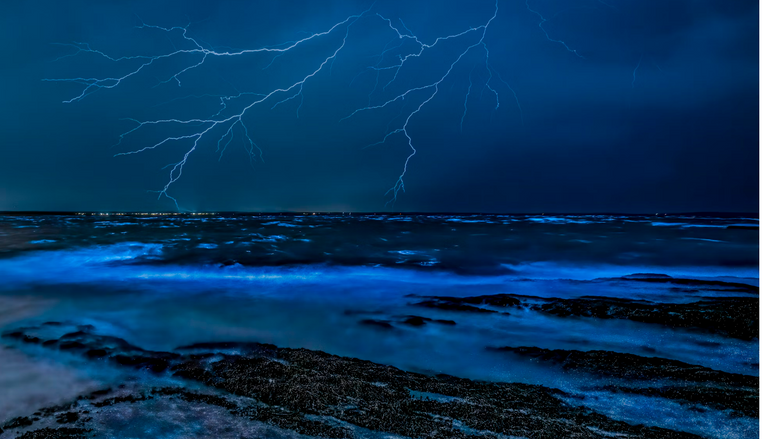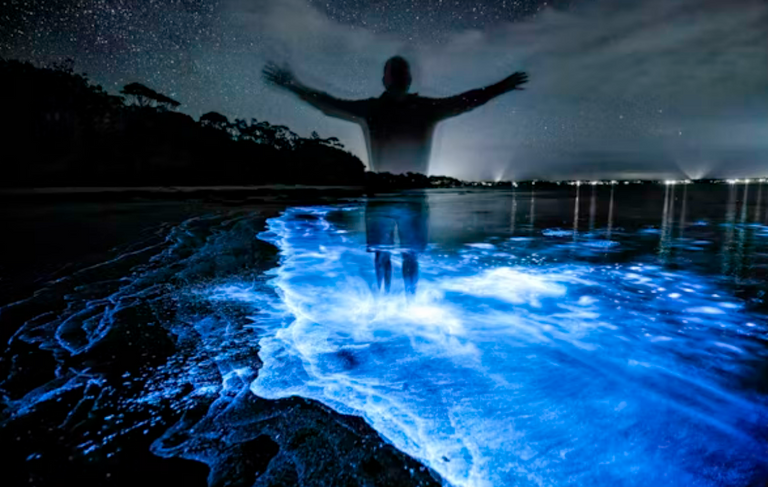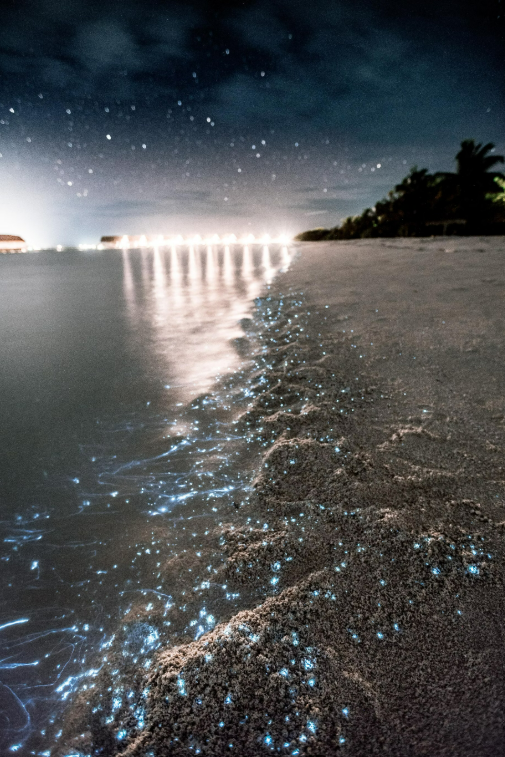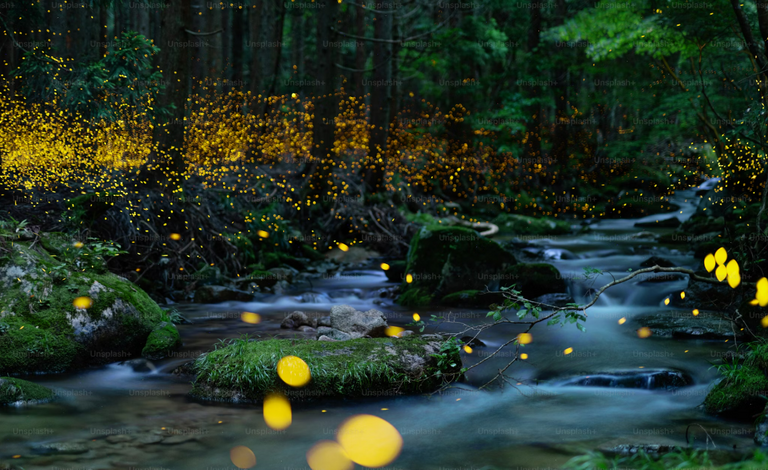Imagine walking along a beach at night and watching the waves glow with an otherworldly blue light. Or diving deep into the ocean and seeing creatures that light up the darkness like stars in the sky. This magical effect is called bioluminescence—one of nature’s most fascinating phenomena.
From glowing fungi to fireflies and deep-sea creatures, bioluminescence is a natural light production that has mesmerized humans for centuries. But how does it work, and why do certain organisms glow? Let’s dive into the science, uses, and wonders of bioluminescence.
What is Bioluminescence?
Bioluminescence is the ability of living organisms to produce and emit light. This glow is created by a chemical reaction involving a light-producing molecule called luciferin and an enzyme called luciferase. When luciferin reacts with oxygen, it produces light—usually in shades of blue, green, or yellow, depending on the organism.
Unlike other forms of light production (such as fire or electricity), bioluminescence is a cold light, meaning it does not generate heat.
Where is Bioluminescence Found?
Bioluminescence occurs in a variety of life forms, including:
1. Marine Creatures 🌊
Most bioluminescent organisms live in the ocean, particularly in the deep sea, where sunlight cannot reach. Some well-known glowing marine creatures include:
- Dinoflagellates (Glowing Plankton): These tiny organisms create glowing waves in tropical waters.
- Jellyfish: Many deep-sea jellyfish use bioluminescence for protection.
- Anglerfish: The famous deep-sea anglerfish has a glowing lure on its head to attract prey.
- Squid & Octopuses: Some squid produce glowing ink to confuse predators.
2. Fireflies & Glowworms 🦟
Fireflies (or lightning bugs) produce light to attract mates. Each species has its own unique flashing pattern. Glowworms, found in caves, use their bioluminescence to lure insects into sticky threads.
3. Bioluminescent Fungi 🍄
Certain mushrooms, like Panellus stipticus and Mycena chlorophos, glow in the dark, creating eerie greenish light in forests. This is thought to attract insects that help spread their spores.
4. Bioluminescent Bacteria 🔬
Some bacteria glow in decaying organic matter, seawater, or even inside animals. In rare cases, glowing bacteria have made fish and meat appear to glow in the dark!
Why Do Organisms Glow?
Bioluminescence is used for several important purposes in nature, including:
🔹 Attracting Prey: The anglerfish’s glowing lure tricks smaller fish into coming closer.
🔹 Escaping Predators: Some squid release glowing ink to confuse enemies.
🔹 Communication & Mating: Fireflies flash in unique rhythms to attract mates.
🔹 Camouflage: Some deep-sea fish use counter-illumination, blending in with the dim light from above.
🔹 Luring Insects: Glowing fungi may attract insects that help spread their spores.
Bioluminescence in Human Applications
Scientists and researchers have harnessed bioluminescence for various technological and medical advancements, such as:
✅ Medical Research: Scientists use bioluminescent proteins to track diseases, such as cancer cell growth.
✅ Environmental Monitoring: Bioluminescent bacteria help detect toxins in water pollution studies.
✅ Glow-in-the-Dark Trees: Scientists are experimenting with genetically modified plants that glow, which could replace streetlights!
✅ Bioluminescent Art & Fashion: Some designers have used glowing bacteria and algae in clothing and installations.
Where to See Bioluminescence in the Wild
If you want to witness this glowing phenomenon, here are some famous bioluminescent locations:
🌊 Mosquito Bay, Puerto Rico – One of the brightest bioluminescent bays in the world.
🌊 Jervis Bay, Australia – Famous for glowing waves caused by bioluminescent plankton.
🌊 Toyama Bay, Japan – Home to glowing firefly squid during the spring season.
🌊 Waitomo Caves, New Zealand – Known for their glowworm-filled ceilings that look like a starry sky.
Final Thoughts
Bioluminescence is one of the most breathtaking natural wonders that continues to inspire scientists, artists, and adventurers alike. Whether you see glowing waves on a beach or fireflies dancing in the air, nature’s light show is a reminder of how mysterious and beautiful our world can be.



